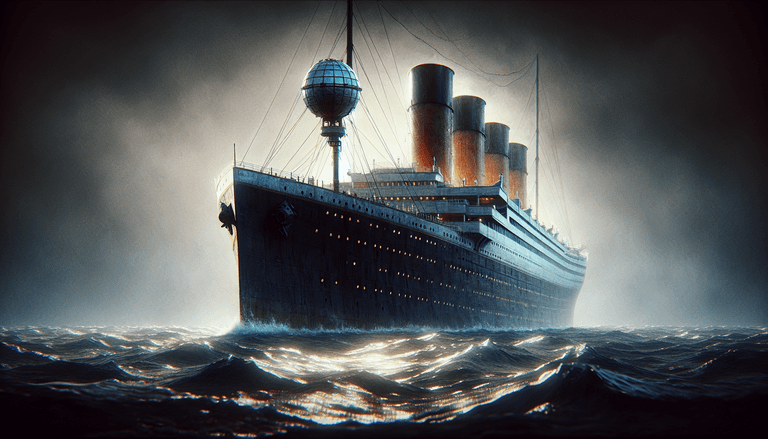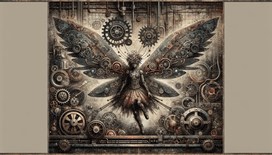Ah, the Titanic! The grandest ship ever to grace the high seas, a jewel in the turban of maritime engineering, and sadly, an unsinkable tale with a tragic twist. But what if, dear reader, the Titanic's voyage through the frigid waters of the North Atlantic had been directed not just by binoculars and a human's frail vision but by the sharp-eyed wonders of radar? Let us heft anchor and set sail on an alternate history where modern technology granted Titanic a second starring role.
A Steamship with Bluetooth-Class Communication
Imagine, if you will, the SS Titanic equipped with radar: RAdio Detection And Ranging for those deck hands still figuring out their morse code from their nautical password hints. Instead of relying on lookouts perched in crow's nests – apparently, birdwatchers are not the most reliable iceberg warners – the Titanic would be an ultramodern ship forging through the night with the mystical power of the electromagnetic spectrum lighting its path.
Picture Captain Edward Smith in his snug captain's quarters, feet up and sipping tea from a cup that doesn't tremble every time someone spots an errant ice cube. As the ship glides over the water, the radar sends its invisible pulses ahead, bouncing off solid objects lurking in the midnight swell, painting a picture on the console with more accuracy than even the finest artist in rainy London.
Iceberg... Right Ahead? Not Anymore!
On that fateful night of 14 April 1912, much would have been different. Instead of peering through dim night air, Fred Fleet and Reginald Lee, Titanic’s original lookouts, might find themselves reclined in cosy seats, feet propped on glowing computer consoles displaying images of everything from burrs floating mere metres away to great bergbeasts miles distant.
"By Jove, I say, Reginald," says Fred, pointing at a blinking dot on screen, "We appear to be approaching a not-inconsiderable mass of frozen aquatic death! Turn, ship, turn!"
The agile Titanic, warned by radar, alters course with graceful predictability, steering clear of the icy end that once called her name. Rather than a fateful collision, the ship and her passengers continue their journey in comparative tranquility, unleashing exclamations of relief in lieu of lifeboats.
The Largest Cruiseliner – Or Messaging Platform?
With the disaster averted, imagine the headlines as Titanic completed her voyage to New York: "The Unsinkable Ship Cheated Death With Radio Magic!" Titanic would become synonymous with unshakeable safety and cutting-edge technology, a floating beacon of innovation.
And what of the passengers? Instead of indulging merely in shuffleboard or debating the delicate flavour profiles of third-class stew, they might have gathered to gawk at this newfangled contraption steering their course; imagine the ship hosting the world’s first-ever technology conference at sea!
"Come,” a passenger might say, “learn how this genius contraption sees the unseen and reads the invisible cues of the sea!” No longer would C Q D and S O S be whispered in hushed terror; instead, mid-ocean drills could focus on learning to sync radar with the budding curiosity of radio signals, keeping both ships and conversations on safe trajectories.
The Echo of an Unchanged Future
For all its imaginative assurance, this Titanic triumph echoes down history with ripples stretching beyond mere shipwright tales. What if the Titanic’s successful voyage prompted a maritime technological revolution? Might radar have cemented its place as an ally of every ship without delay, perhaps even entering wartime strategies earlier, giving fleets and navies the advantage of clairvoyant capacities?
Though the backdraft of alternate timelines offers limitless curiosities, there’s a humbling truth told by history itself: of the courage to send S O S signals when it matters and the resolve to not only learn from the past but to dream of a future where ships sail safely, not only on water but on the hope of human ingenuity.
As the Titanic sails the annals of "what if" under the guiding light of radar, its legacy strengthens our latitude for exploring what might have been. Carry on, wave-riding readers, and never cease asking: what if? The currents of time, after all, are ripe with possibilities.







